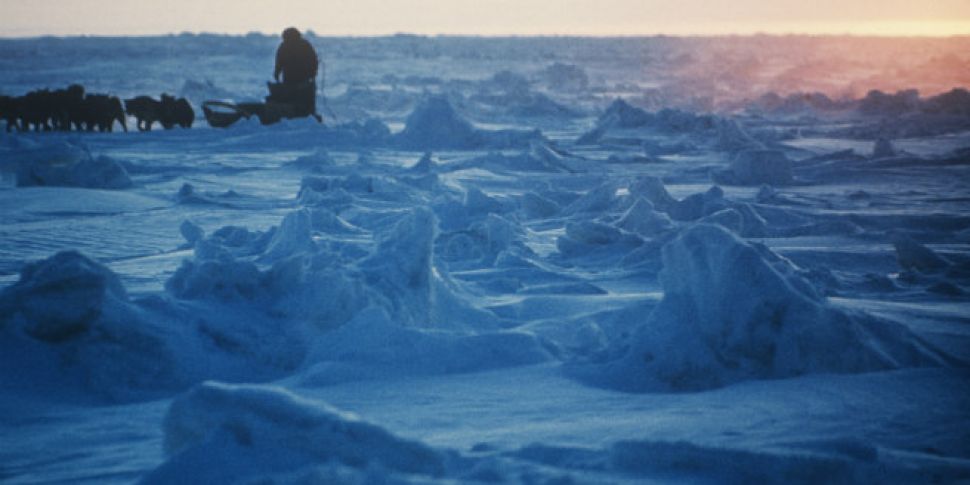In February 1968 ‘the last great journey on Earth’ began. Led by polar explorer, Wally Herbert, the British Trans-Arctic Expedition hoped to traverse the Arctic Ocean atop the ice, a feat never before achieved. Totaling roughly 3,800 miles this journey would be no easy feat. This journey is recounted, with vivid and beautiful pictures, in Across the Arctic Ocean composed by Wally himself and polar historian Huw Lewis-Jones.
60 years before Wally and his team had set out two other men led expeditions which they claimed had reached the North Pole. Led by Frederick Cook and Robert Peary the success of these ventures always remained unconfirmed and in doubt. One of Wally’s aims in tracking across the Arctic was to see how viable Peary’s claim was, Cook’s had largely been dismissed before now.
Though part scientific expedition and part geographic exploration, Wally’s main aim was to reach the North Pole by foot and complete the first crossing of the Arctic Ocean at its longest axis.
Setting out on 21 February Wally, his three companions, and 40 huskies began their journey. Unbeknownst to them they wouldn’t set foot on land again for 16 months. In July of ‘68, having completed less than a third of their journey, Wally and his team established a camp to see them through the coming winter. They had been unable to reach a position where the drift of the ice would be in their favour and the following months were spent drifting around the pole on the ever shifting ice.
Speaking to Patrick Geoghegan, Huw explains the state of the men’s lives on the ice:
“At any moment a polar bear may come in through the door for your dinner, and you have to get up probably every three hours…to check the ice on which you’re living is not going to break beneath your feat. And that's the easy bit, that’s during the winter, but when spring arrives you have to hitch your dogs to your sledges and push on through desperate temperatures in an effort to reach the otherside.”
When sunlight returned the following year Wally and his men struck camp and began the rest of their journey. Relying on themselves and their dogs alone the team reached the North Pole on 6 April 1969. A few months later they completed their crossing and made history.
The Space Race had drawn all eyes skyward though and all feats on Earth stood pale against man’s blooming exploration of the galaxy. Wally’s expedition was one such overshadowed endeavour. Many still recognised the greatness of this achievement at the time, including Prime Minister Harold Wilson, and numerous plaudits waited for Wally and his team at home.
The growing plight of the Arctic has drawn others to Wally’s expedition and their experiences on the ice. Global warming has seen the Arctic ice shrink and made it impossible to replicate Wally’s expedition. Across the Arctic Ocean chronicles a lost world and a journey that can never be retraced.
Join “Talking History” as Patrick talks with Huw about Across the Arctic Ocean and the amazing journey it charts.
This week’s “Talking History” features five other great history books:
Chris Dooley’s account of John Redmond’s final years, Redmond: A Life Undone.
Stephen Walker’s Ireland’s Call: Irish Sporting Heroes Who Fell in the Great War.
Lucy Adlington’s history of fashion and the clothes we wear, Stitches in Time.
Jean Manco’s exploration of the Celts, their history, and legacy in The Blood of the Celts.
And Broken Faith, the latest installment in Toby Clements’ fictional series set during the Wars of the Roses.









